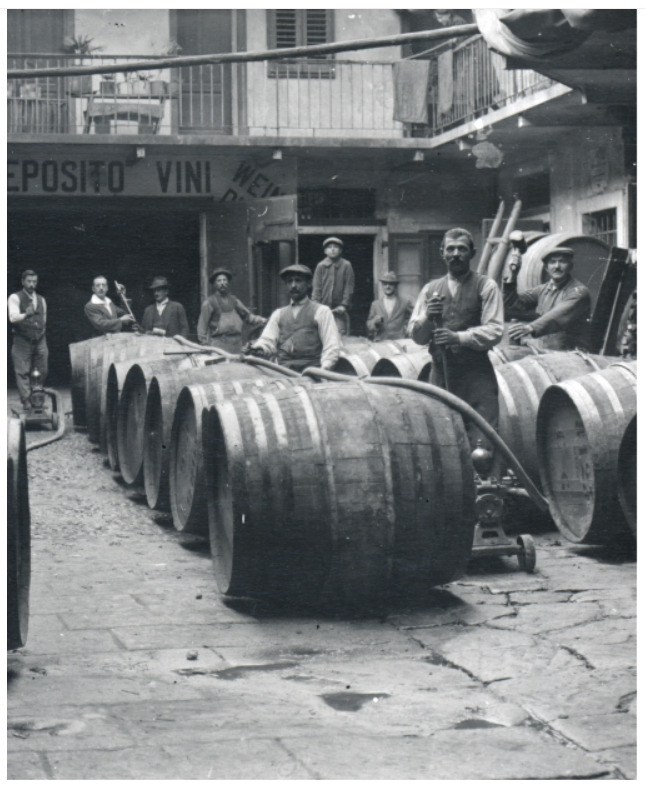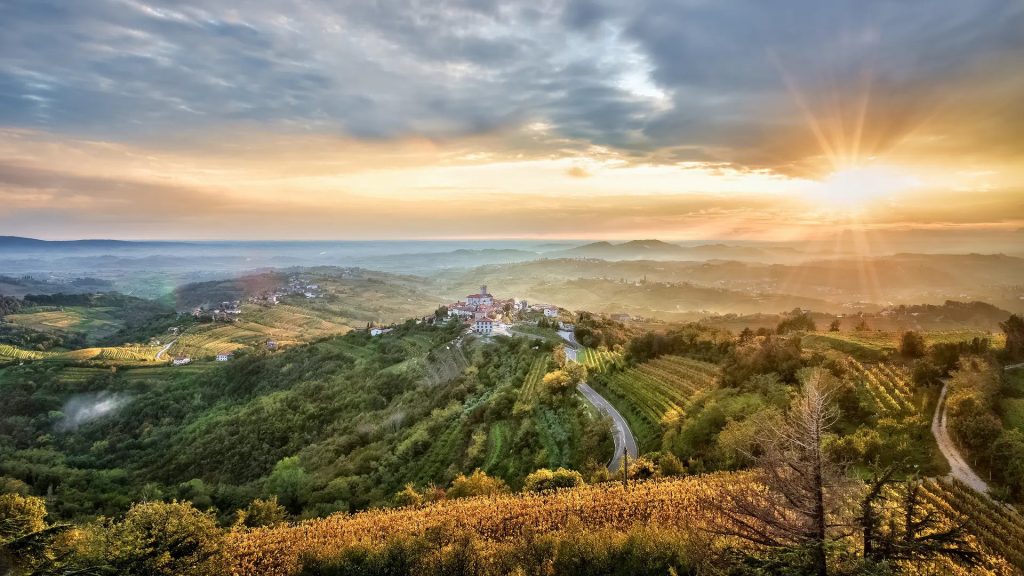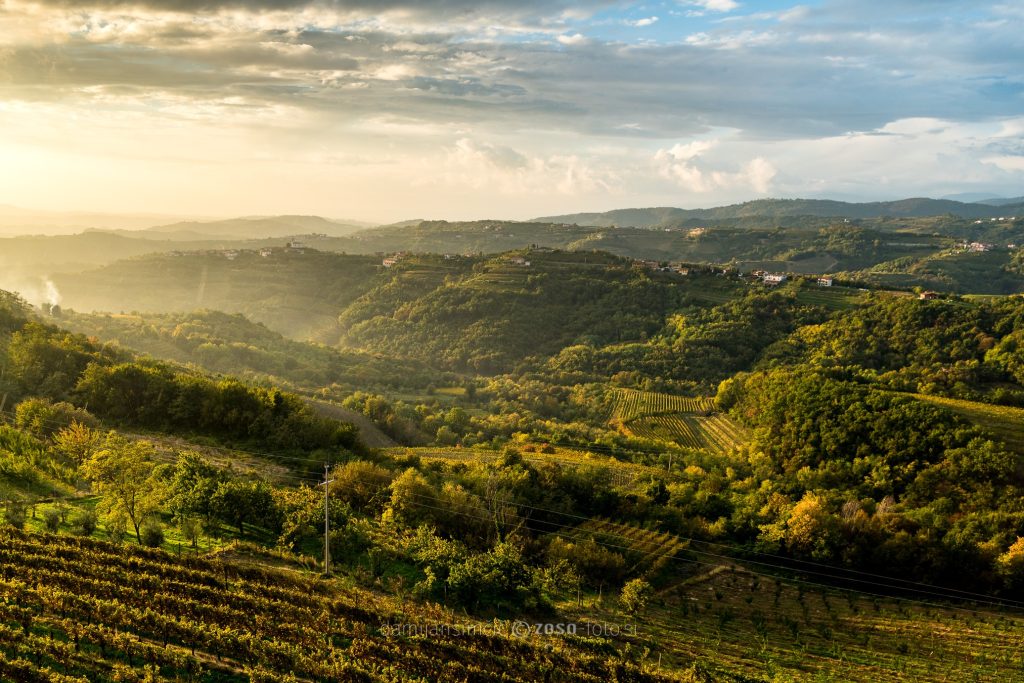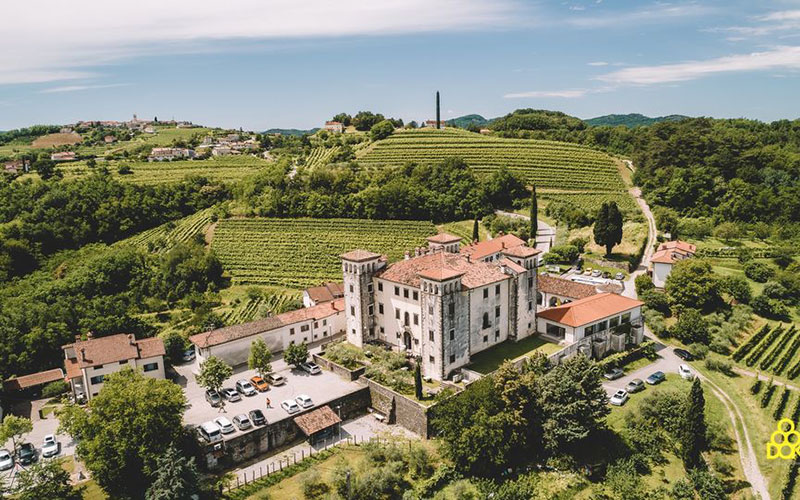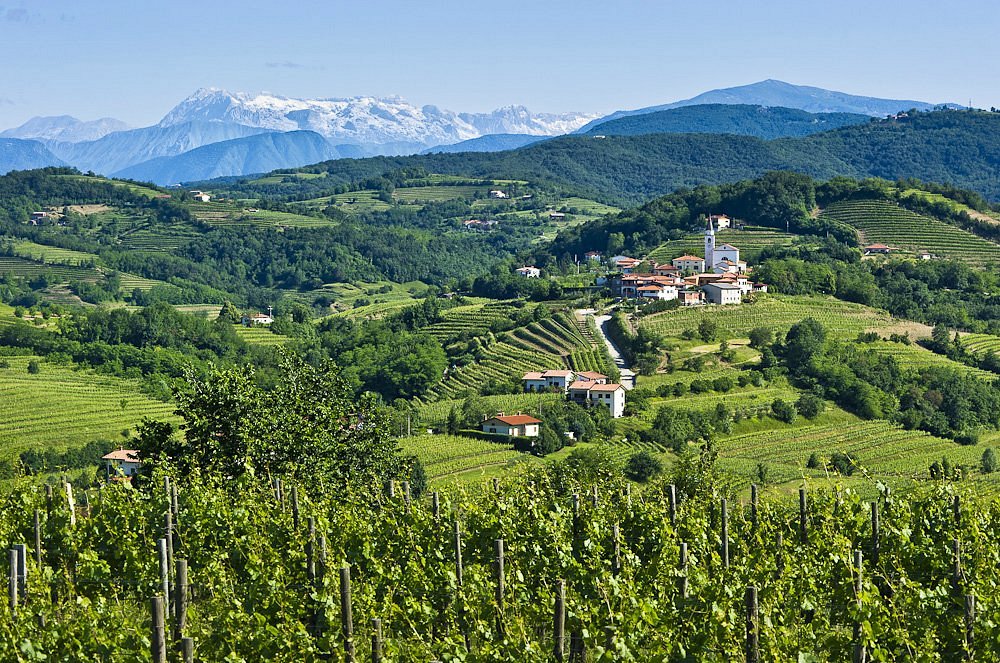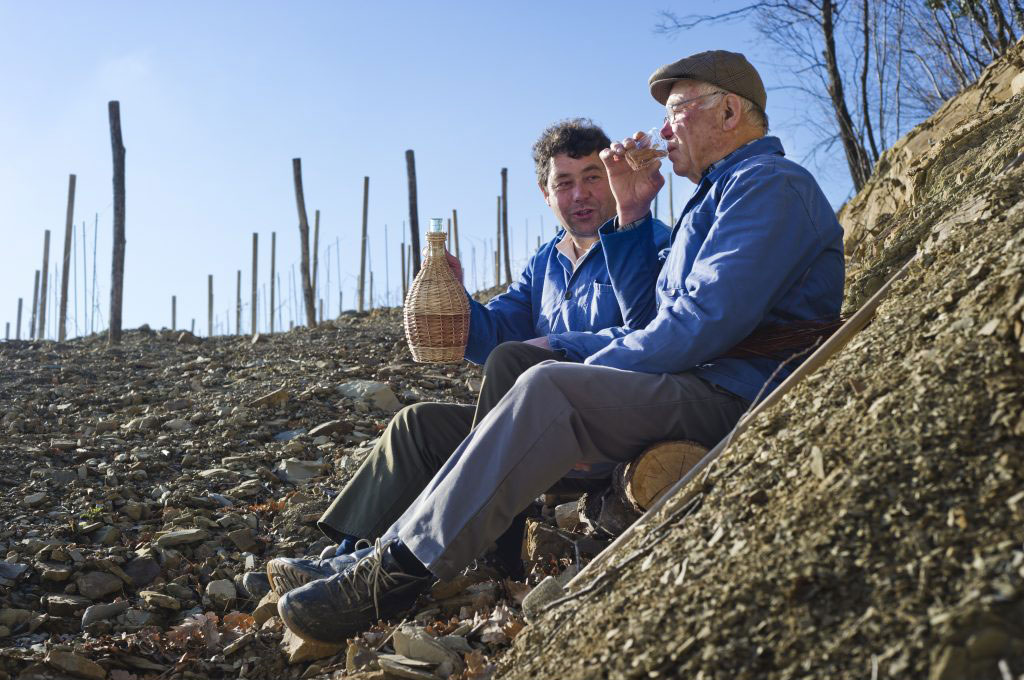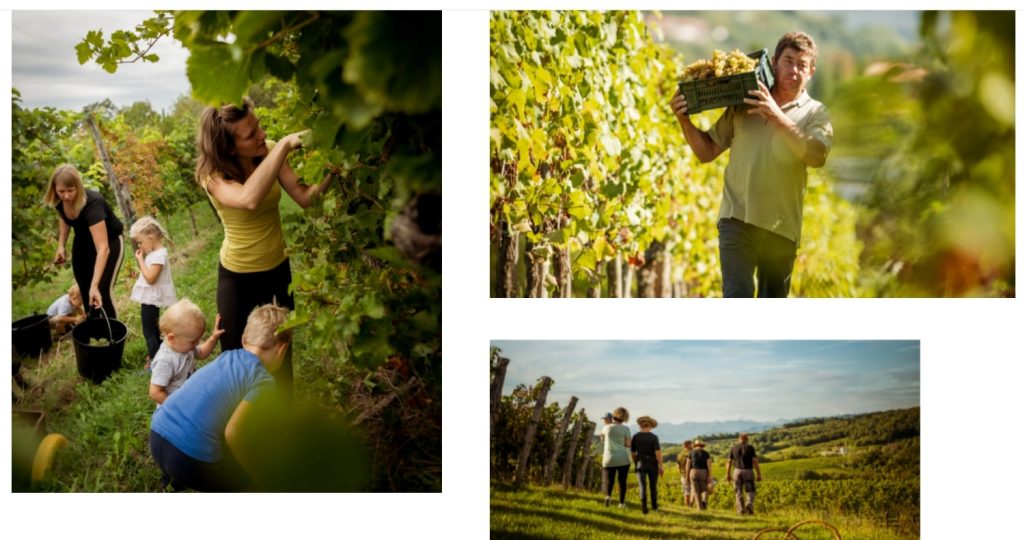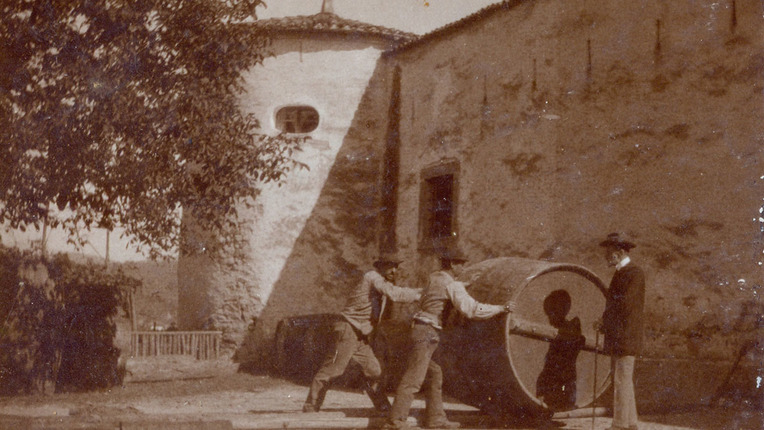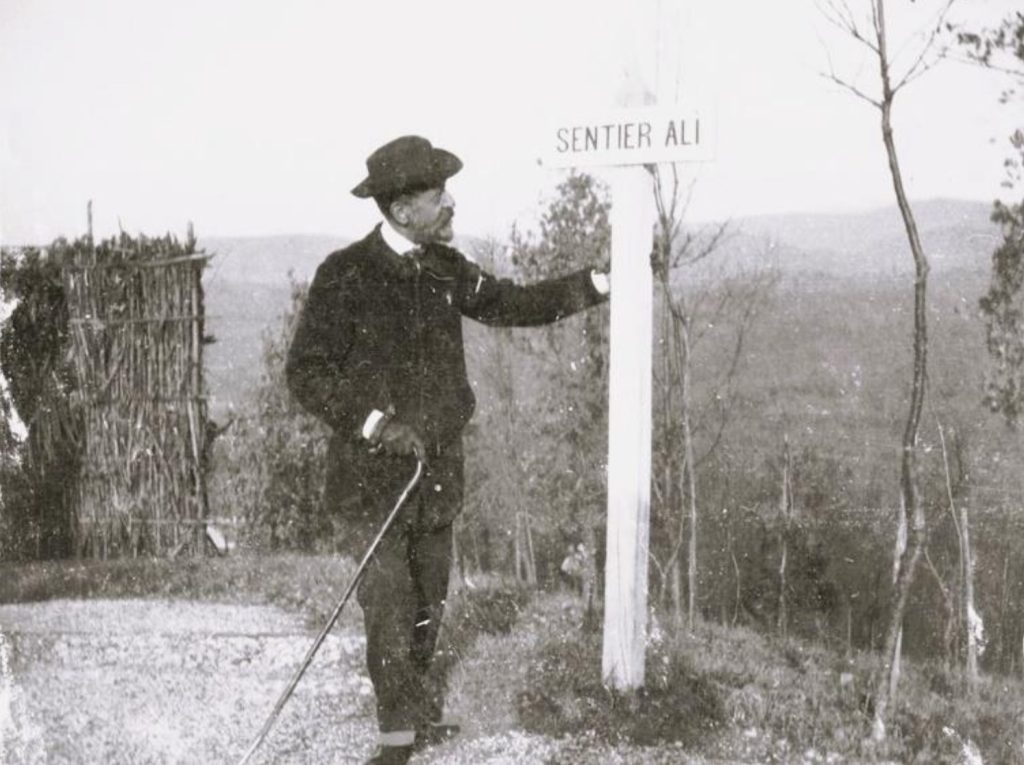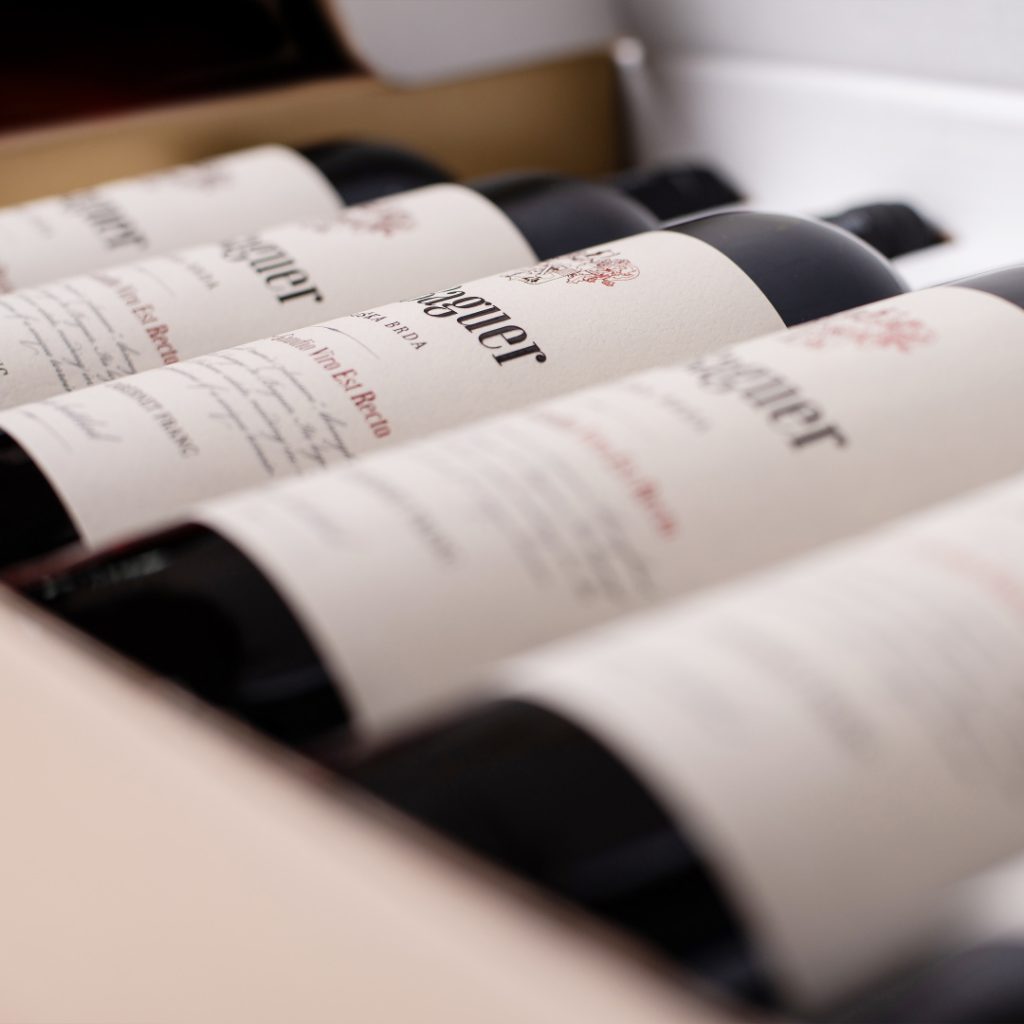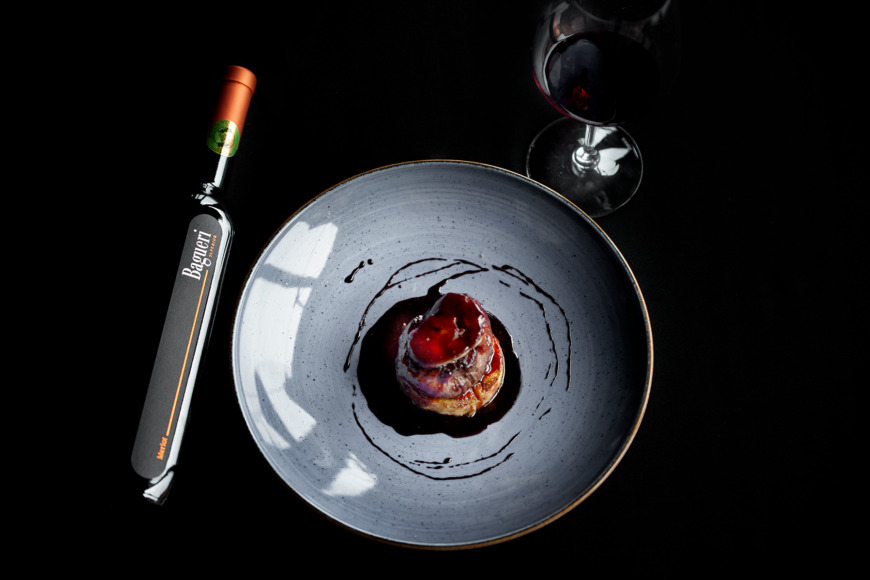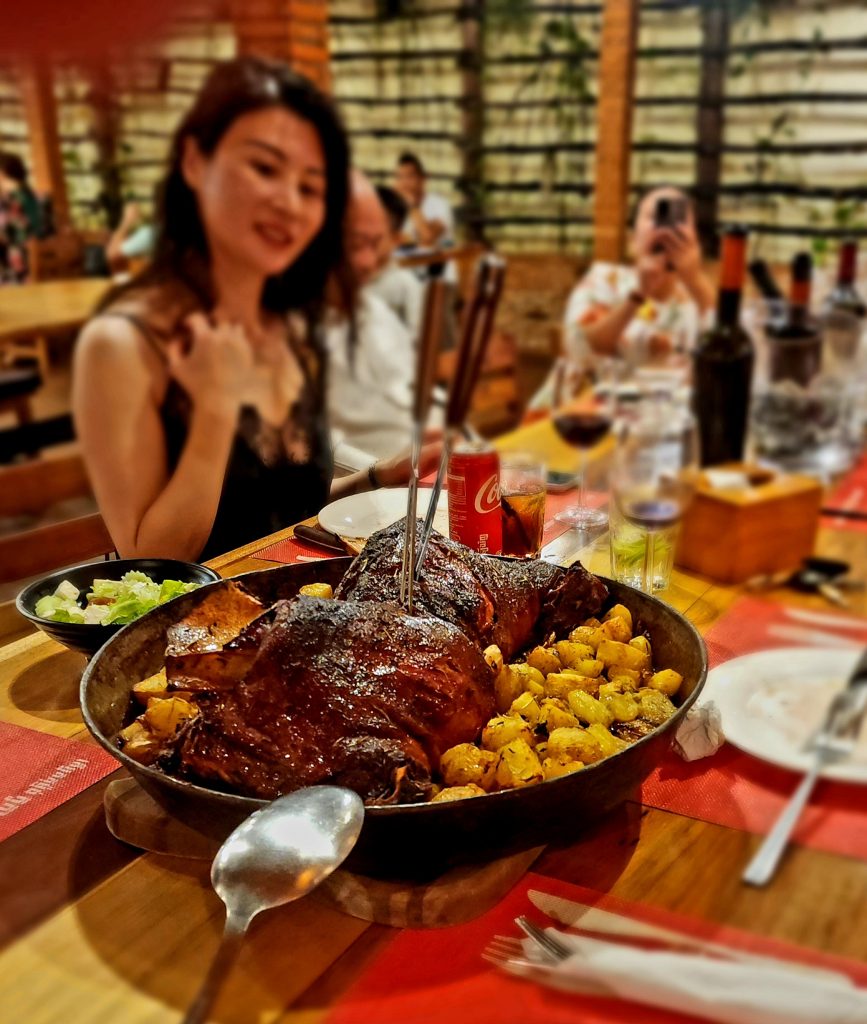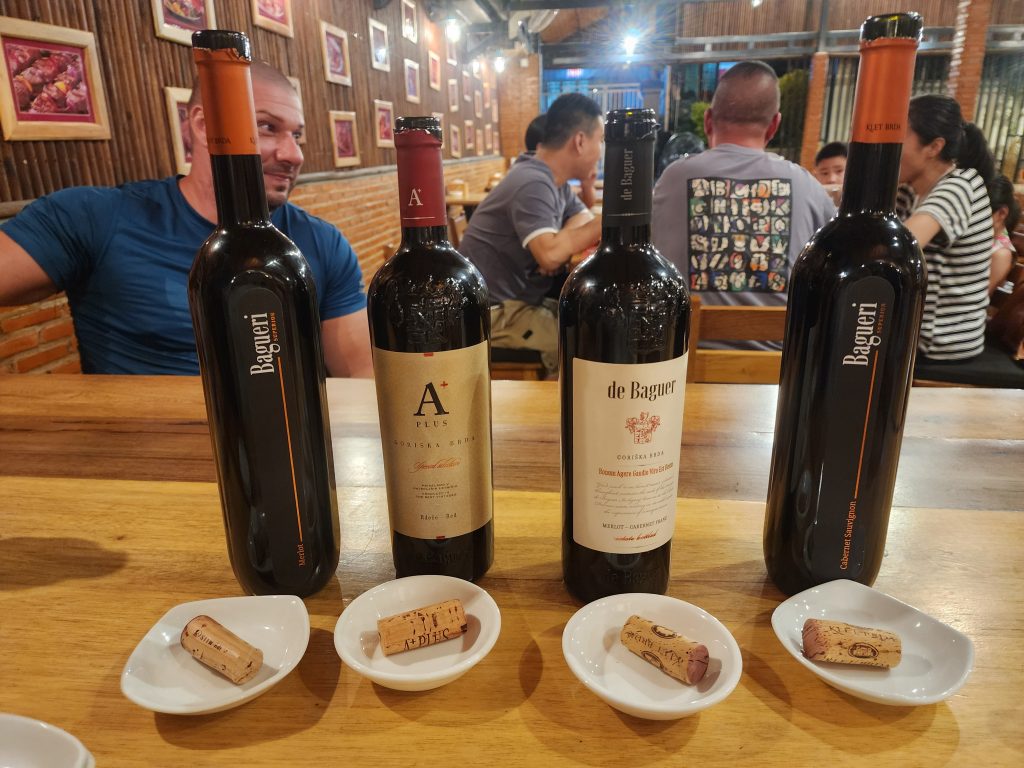Goriška Brda
It has often been written that Slovenia is thought of as Europe’s bright, shiny green jewel. In 2016, Slovenia became the first country in the world to be declared a Global Green Destination, after reaching a record 96% level of compliance with the required sustainability criteria.
The country also boasts a 2,400-year-old winemaking tradition, and whilst it accounts for just 0.5% of Europe’s vineyards, the quality of its wine has it gaining increasing traction in global markets.
Brda
‘It is a mystical place, a sort of Shangri-la hidden within the hills.’
The Brda region is one of rolling hills and idyllic villages, located on the sunny side of the Alps, at the far western edge of Slovenia. The region borders Collio, which is a part of the world-renowned Friuli-Venezia Giulia wine region of Italy. In fact, at times the two regions spill over into each other, with some Slovenian producers using the Collio denomination, because their vineyards cross the international border into Italy.
Perched between the Adriatic Sea and the Julian Alps, grapes here benefit from the favourable elements of both the mountains and the sea, whilst also offering some protection from the harsher extremes of each other. Vineyards enjoy the freshness and cool climate of the Alps, and the coastal influences of the Mediterranean, creating convection air currents that temper climate extremes.
The primary grape variety is Rebula, there is also Merlot, Chardonnay, and Sauvignonasse, (Sauvignon Vert). Other varieties grown in smaller amounts include Pinot Grigio, Sauvignon Blanc, Cabernet Sauvignon, Cabernet Franc, Pinot Bianco, Picolit, Verduzzo, Pinot Noir, and Syrah.
Rebula, (Ribolla Gialla) was brought to the Brda region by the Romans, who called it Helvola. However, winemaking predates Roman influence here and is believed to have started sometime between the 5th and 4th centuries BC, by Celt and Illyrian tribes
The wines typically display cool climate characteristics, elegance with a pronounced and delightful minerality, the impressive structure a product of its terroir, including the soil profile known locally as Opoka, which is composed of layered marl, sandstone, and limestone.
The steepness of the hills require terraced vineyards to prevent erosion, this means that everything is done by hand, the results speak for themselves; no other region in the country can boast an international collection of awards, medals and trophies like they can here in the Goriška Brda. Wine Spectator has called it ‘The Next Great Wine Country’ and CNN listed it in their ten greatest undiscovered wine regions.
With a complicated history and shifting borders, Gorica (Gorizia) was located in Italy after the Second World War, whilst Nova Gorica was built on the Yugoslavian side, (becoming Slovenia in 1991). Both Italy and Austria influences the winemaking; about 75% of production in the country is white wine, most of which is consumed domestically.
Klet Brda
In Brda, almost every family cultivates a small vineyard, with cherry and olive trees growing beside it; on average each family here owns five to seven acres of vineyards.
Established in 1957, the Klet Brda wine cooperative is owned by over four hundred grape-growing families, who have worked together for over half a century, striving to understand and work with their terroir, to bring out the very best in their regional wines.
Focusing strongly on export and being the region’s most awarded winery; Klet Brda produces fine wines that have made their way onto wine lists and the finest dining tables all over the world.
The Key
Klet Brda takes respect for the land, the community and sustainability for future generations to a level of commitment and importance perhaps unmatched anywhere else in the world today. These principles of environmental responsibility are woven into their viticulture and oenology. It forms the very fabric of their community and family life.
Vineyards are under careful supervision, to preserve and protect the local diversity of fauna and flora, promoting biodiversity, and ensuring that families are producing wine grapes in harmony and balance with nature. Klet Brda sees this commitment as not only enabling a sustainable future but also ensuring social stability and prosperous outcomes for all of the families in their community -for generations to come.
Here you will see vineyards scattered among fruit trees, olive plantations, and forests, and wines with back labels showing bee logos on them; awarded where bees are active and cared for in the vineyards, recognizing their invaluable function in the ecosystem.
Klet Brda is the first winery in the world to receive the international Green Key. Awarded in 2019, this certificate allowed them to take part in the national program and certification system Green Scheme of Slovenian tourism and become the first recipient of the Slovenia Green Attraction certificate. The Green Key is the leading standard for excellence in the field of environmental responsibility and sustainable operation within the tourism industry. This prestigious eco certificate represents a very high level of commitment to comply at those certified premises, with the strict standards of the Foundation for Environmental Education (FEE).
Silverado de Baguer
Silverio de Baguer was born on December 2, 1838, in Odessa, where his father Jaime served as Spanish Consul. In June 1872, he married Cecilia de Catterini-Erzberg, the only descendant of a noble family from Gorizia who owned Dobrovo Castle.
Silverio De Baguer contributed significantly to the development of vine growing and winemaking in Brda, where in 1880 he planted the first vineyards as we might recognize them today. His example was followed by numerous local winegrowers. He cultivated 315 hectares of vineyards, producing an average of 1,200 hectoliters of wine a year.
Dobrovo Castle
The beginnings of Dobrovo Castle date back to the 13th century, but its medieval origins have been lost through the centuries. In the early 17th century, a new Renaissance mansion was built on its ruins, which has survived relatively unchanged to the present day and is considered one of the finest examples of the style in the wider region. The first owners of the castle were supposedly the Counts of Colloredo, followed briefly by the Marquess of Montecuccoli and from the late 18th century, the Catterini-Erzberg family from Gorizia. In 1872, the holding passed by marriage to the de Baguer family.
In 2018, Klet Brda began to renovate de Baguer’s wine cellar, restoring it to its original role. It is now home to wines from the de Baguer and A plus range of wines, aged in French and Italian barriques and egg-shaped wooden barrels, as well as pupitres, special wooden racks for the riddling of sparkling wines produced according to the traditional method.
The de Baguer Wines
Chardonnay, Ribolla Gialla, Pikolit
Golden colour, the wine has distinct aromas of some tertiary development, there is baked apple tart, preserved lemon, spices, apricot, fig and wild honey with a touch of rolled oats and granola. The palate shows a full-bodied white wine with baked apple tart, dried straw and herbs, wild honey and mandarin fruit characters, with extended, leesy notes, and a hint of flor, before finishing with some decent minerality. Drink now with char-grilled squid, 86/100
A Plus Red 2018
Merlot, Cabernet Sauvignon, Cabernet Franc
Exotic aromas of pan spices, charcuterie, axle grease, pencil lead, coffee grinds, and sourdough over chocolate-dipped cherries, raspberries and orange slices, peel on. The palate is soft, light and with complex fruit flavours of plum, spice and meatier, beef broth notes. The tannins are very gentle and the aftertaste is complex and lingering. Drink now with osso bucco, pork belly or duck noodles.
87/100
de Baguer Merlot / Cabernet Franc 2018
Aromas of Mulberries and spices, gingerbread and smoky notes, with hints of dried herbs and green peppers. The wine shows decent concentration on the palate, fine but persistent tannin, length is good, some richness on entry, plush fruit, could do with a little more depth and concentration but good complexity and attractive ripe fruit. Drink with small game or cured meats. 86/100
Bagueri Superior
The Bagueri Superior range of wines are, by definition, the finest fruit, given not only the finest treatment in the winery; here winemakers are also given the brief to push the envelope, broaden the boundaries of their winemaking and aim to create great wines that are not only some of the very and best of type, but wines that are unique in their interpretations and expressions of terroir, variety and quality.
The Bagueri Superior Wines
Chardonnay 2020
Light golden colour, the wine has aromas of ripe peach, tinned pineapple, lemon curd and hazelnut, there is also a touch of vanilla pod and a hint of melted butter.
A creamy, lactic entry onto the palate there is some good mid-palate richness, (peach and cantaloupe) a touch of wood spice and a lick of refreshing minerality on the finish, the back palate flush with lemon meringue and grilled pineapple notes.
Here we can taste altitude, hungry soils and a cool climate. As a commune wine, it would be interesting to know vine age and crop levels, there is a character here in the wine -as well as terroir and once senses there is potential for even better to come. Drink now with cured ham and smoked chicken. 89/100
Merlot 2019
Pale red brick colour, aromas of tobacco leaf, soft red berries, mulberry notes, mocha and a whiff of mint. Light, soft and silky on the palate the fruit is ripe and attractive, red berries with a hint of thyme and a bitter chocolate finish. Could do with a little more length and concentration but attractive and elegant. Drink now with smoked duck. 88/100
Cabernet Sauvignon 2020
A medium-bodied Cabernet with ripe blackcurrant aromas, earthier notes, five spice, tobacco leaf and cigar box notes, smoky. The wine shows good ripe fruit on the palate, blackcurrant and a touch of plum giving way to coffee grinds and fine tannin. Attractive fruit lacks a little concentration but is very pleasant with roast lamb and carne asada. 90/100
Summary
Overall, I found the wines attractive, interesting and enjoyable, made from cool-climate, clean, ripe fruit with no obvious faults or problems in the winery. If there was any question on the wines it was that they could do with a little more concentration and depth of fruit, and this had me wondering about cropping levels. I did get a sense of a real push toward high quality and suspect there is enormous potential in this region for greater things to come. The wines were elegant, with lovely acidity, and fine structure.
For now, it seems they are on the right path and making some very enjoyable wines. I was thrilled to try these wines, and feel they are definitely a region to look much further into and to keep a close eye on, I will be back for more.
All wines were tasted at Pepe Artisan Foods in Sihanoukville over a superb dinner prepared by Pepe and his family.
Darren Gall

